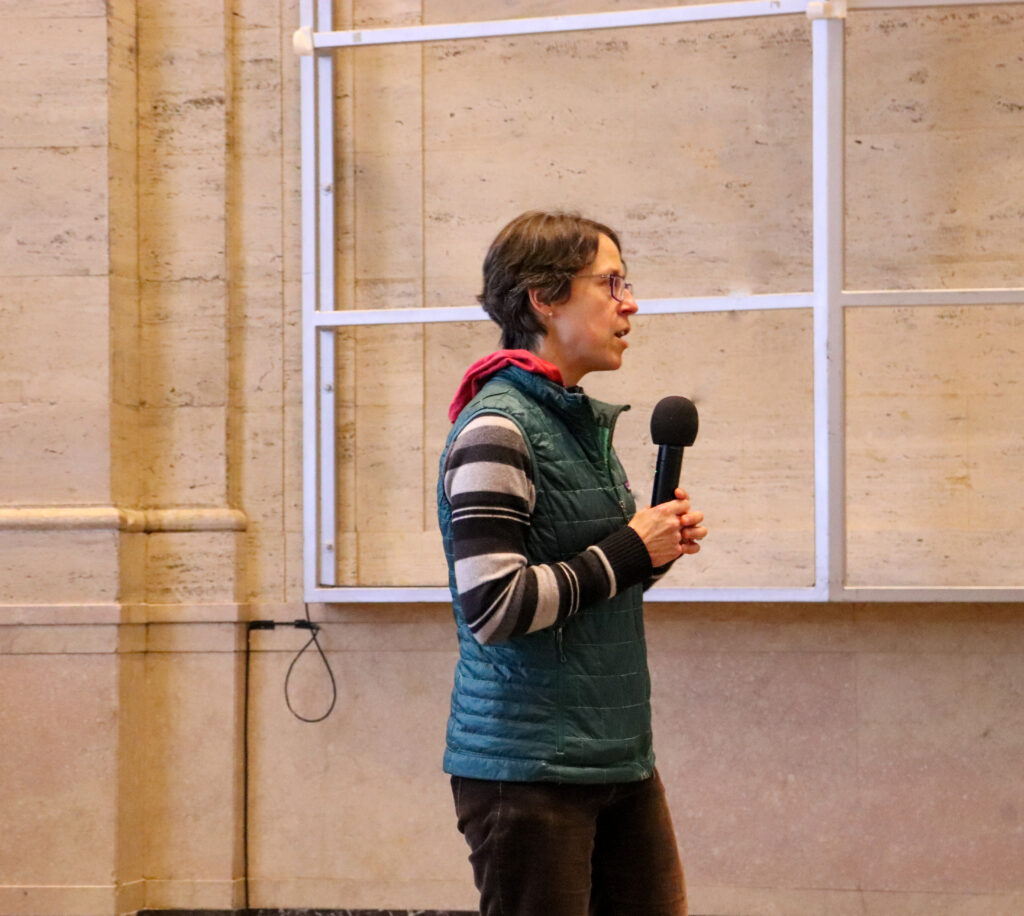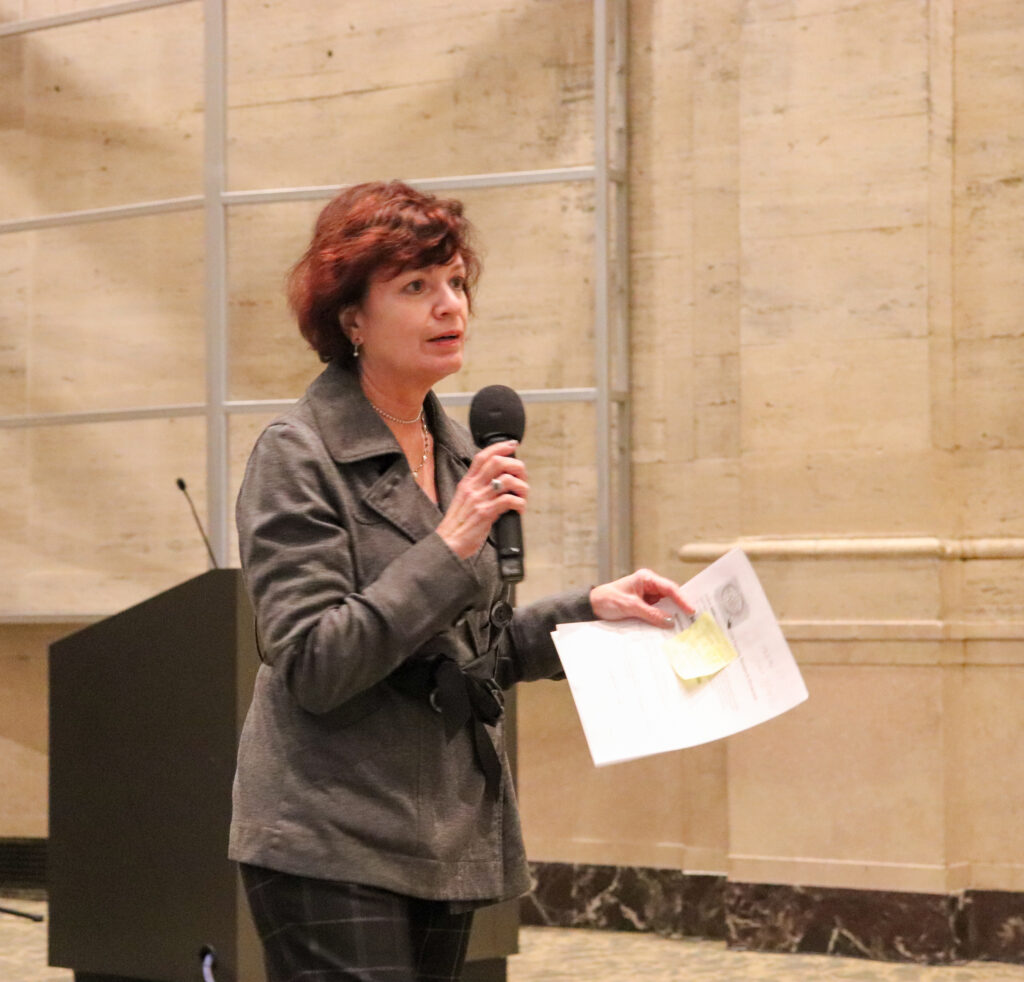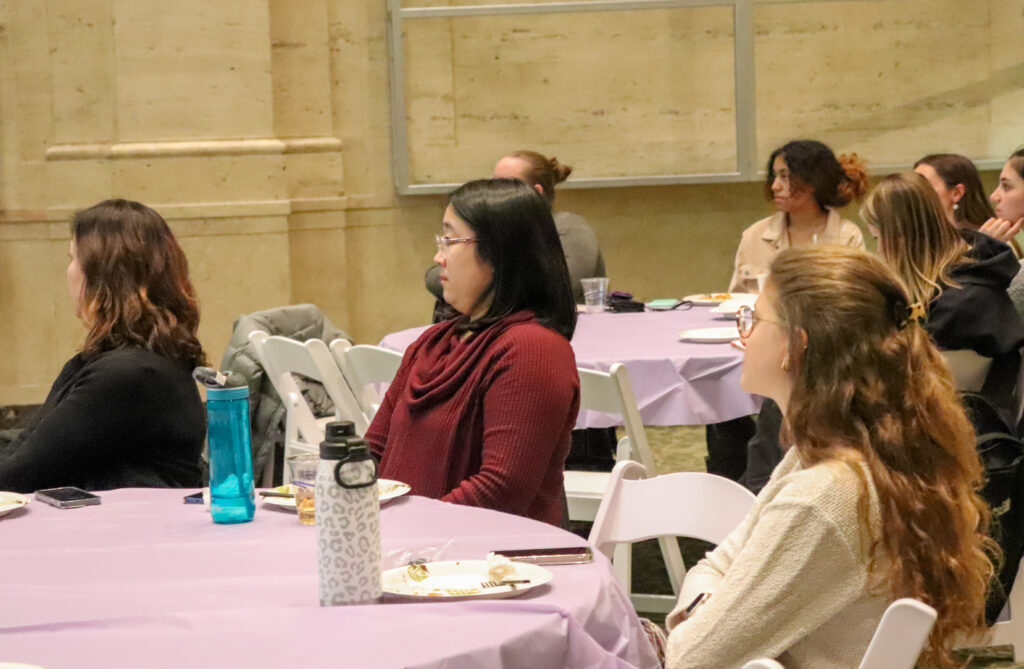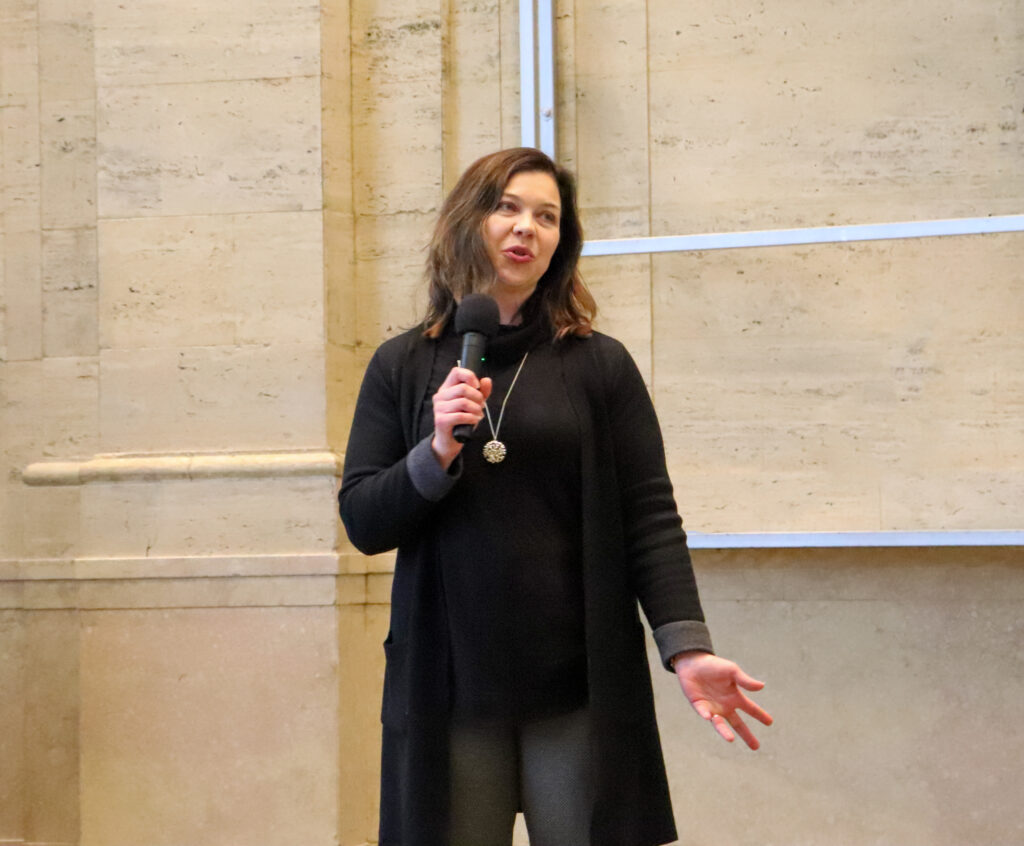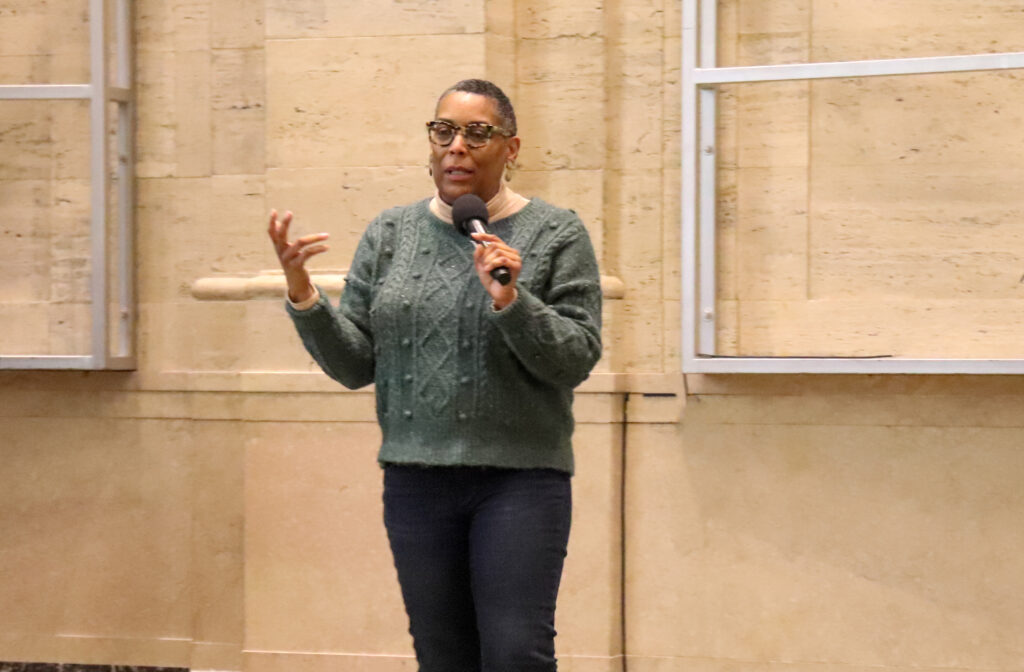‘Training Our Future Colleagues’: CSD Faculty Symposium Celebrates Scholarship, Community
Students and faculty in Communication Science and Disorders gathered for their annual Faculty Research Symposium last week to share some pizza, laughs, and student research opportunities.
As the event’s host, Patti Nelson—who coordinates the department’s student advising and program support— explained the symposium serves two purposes. The first is to recognize and celebrate the breadth of research being conducted by CSD faculty. The second is to “spark an interest” among undergraduate and graduate students in the many opportunities to volunteer or even obtain a paid position in one of CSD’s on-campus research labs.
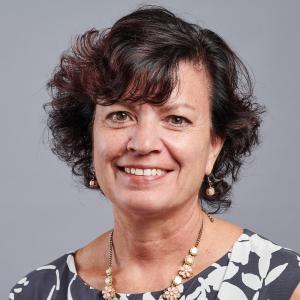
“The faculty and clinical instructors always talk about how we are training our future colleagues,” Nelson said. “We are on a first-name basis with our students and have an ‘open door’ policy with them. Oftentimes prospective students and newly admitted students talk about the general milieu that they see among the department’s academic faculty and clinical staff, which is sometimes the deciding factor for why students come to us for their graduate programs.” She added that all CSD graduate students collaborate with their professors, engage in research, receive mentorship, and develop a strong thesis concept.
The symposium featured CSD professors sharing their work with students and fellow faculty while also highlighting past and current students that have completed theses under their guidance.
Here are some examples of research presented during the symposium:
Qualitative and Art-Based Research with Robin Danzak
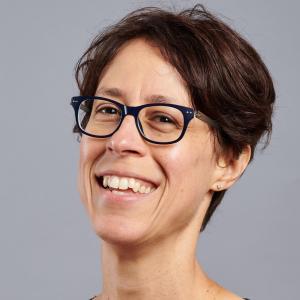
For Associate Professor Robin Danzak, research isn’t all about numbers in a spreadsheet. She prefers taking a more personal, qualitative approach to her scholarship.
“Research is about asking questions and using systematic ways to answer those questions. But how you answer the question is just as important as what the question is,” she said.
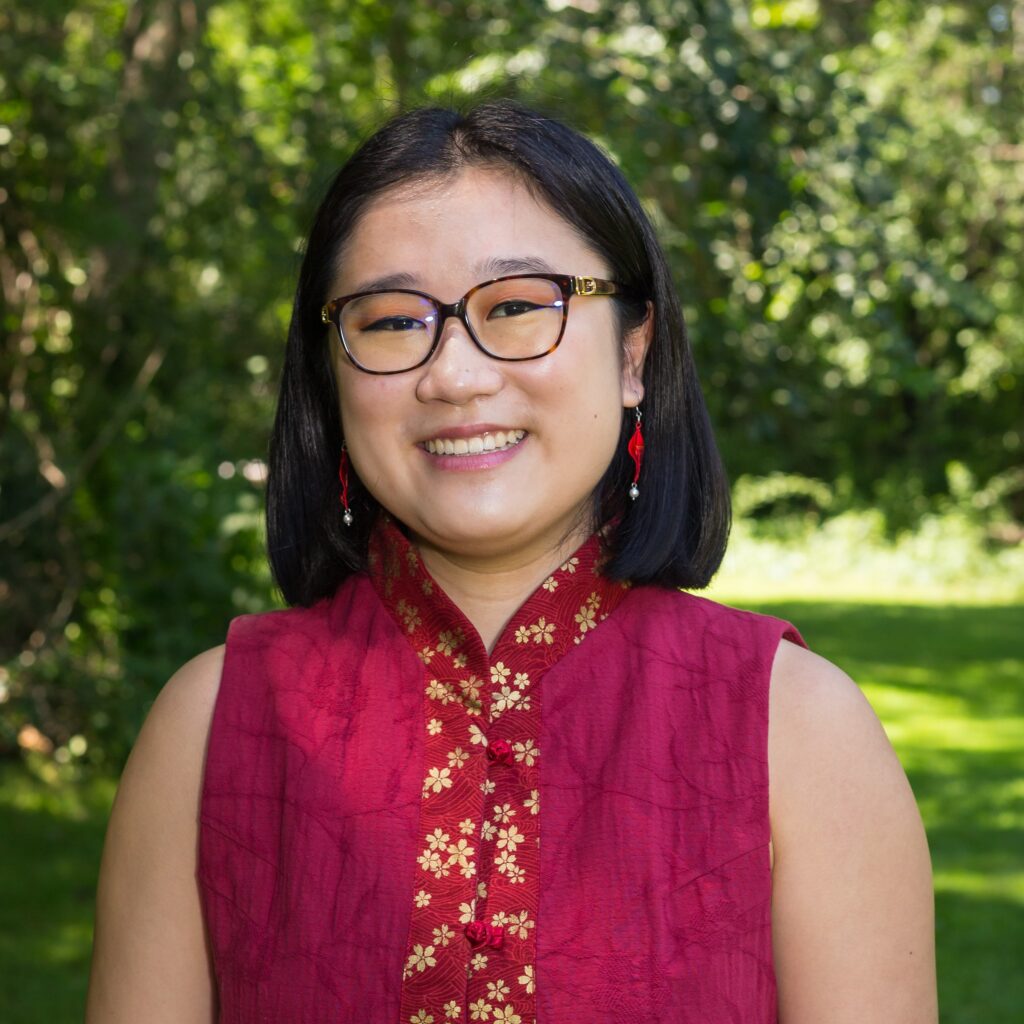
She said research methodologies, namely how a student plans to approach answering their research question, hones their area of study. For example, Danzak has used qualitative methods such interviewing subjects and conducting focus groups in her research lately.
Under Danzak’s mentorship, first-year graduate student Emily Chen is using the Photovoice method—which involves a subject’s reflections on photographs from their lives—to examine the personal experience of Asian Americans who identify as neurodivergent.
The LI+TLE Lab with Lisa Wisman Weil and Rhiannon Luyster
Floor 6 of the Union Bank Building is home to the Lab for Infant and Toddler Language at Emerson, abbreviated to LI+TLE and pronounced “little” for short. There, Associate Professor Rhiannon Luyster and Senior Scholar-in-Residence Lisa Wisman Weil study the speech and behavior of children with autism—specifically infants and children up to the age of 5.
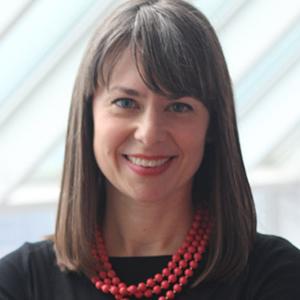
Employing quantitative and mixed model methodologies, the two scholars and select graduates examine features of child language development. Luyster and Wisman Weil are also addressing the language of their field—studying how, speech pathologists, clinicians, and scholars use varying frameworks to reference unconventional language habits in children with autism.
“Whenever you’re doing more with people with autism, it’s really important to hear them, to make sure that you’re honoring their understanding of their language use,” Wisman Weil said.
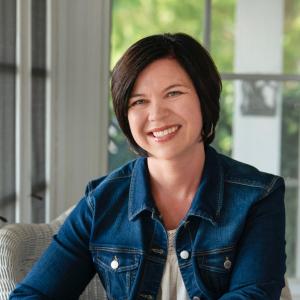
Ongoing studies in the LI+TLE Lab aim to understand and investigate the complexities of unconventional language. A number of graduate students have studied the communication methods of autistic children with help from Luyster and Wisman Weil—including Lauren Rosano who researched and developed parent-led intervention techniques for encouraging more sophisticated speech patterns in autistic children.
DEI in CSD with Valerie Johnson
Distinguished Scholar-in-Residence Valerie Johnson cited a statistic that elicited some shocked expressions. Of the more than 200,000 speech pathologists registered with the American Speech Language Hearing Association, only 8 percent identify as minorities. Johnson is part of this 8 percent, and is continually working to address the implications of underrepresentation.
In her research of children who speak the African American English (AAE) dialect, Johnson found that Black children who use AAE are commonly misdiagnosed with speech impediments. Much of the speech pathology community, she says, lack a clear understanding of the diversity and meaning of such cultural dialects which she cites as just one example of “gaps in the literature.”
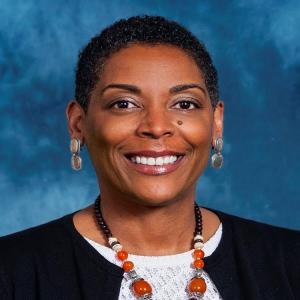
In an effort to address inequity in speech-language pathology, Johnson and professors from universities nationwide formed an organization called the Speech, Language, Hearing Scientists Equity Action Collective (SLHSEAC) in 2020. The founders have since formed their own medical journal, the Journal of Critical Study of Communication and Disability.
“We’re working [toward] transforming the professional community to be more inclusive and equitable, in hopes of having the same effort on the services that we provide,” Johnson said. “We work on this entire pipeline: students, admissions, policy, and procedures.”
Johnson and the SLHSEAC believe incorporating more diversity, equity and inclusion practices into CSD curriculums will begin to address the aforementioned gaps.
Multimodal Communication Lab with Dr. Mili Mathew
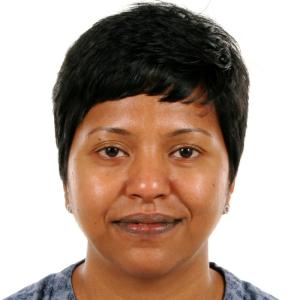
The newest addition to Emerson’s CSD faculty, Associate Professor Mili Mathew‘s new multimodal communication lab studies how adults with brain injuries use hand gestures to communicate. Mathew invites both undergraduate and graduate students to work in the lab.
The FACE Lab with Dr. Ruth Grossman
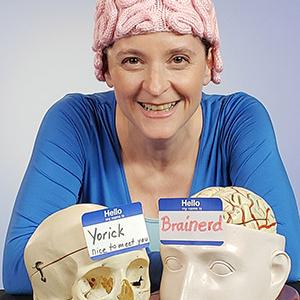
Also on the 6th floor of Union Bank, Professor Ruth Grossman works with CSD students in the Facial Affective and Communicative Expressions (FACE) Lab. Specializing in analyzing the facial and verbal expressions of individuals with autism, the FACE Lab is dedicated to analyzing means of social communication. Aspects of the lab’s recent research were published in the Autism Journal, founded by the National Autistic Society. Grossman, Associate Professor Eileen McBride and Jennifer Kurzrok, MS ’19, examined the effect of parent-led intervention techniques and parents’ roles as caregivers of children with autism.
Categories
Isabella Luzarraga View All
Isa is a senior journalism major minoring in media studies. She is from Omaha, Nebraska but loves coming back to the city. Outside of coursework, Isa is the Managing Editor of Your Magazine, the secretary of Emerson's chapter of NAHJ and a freelance writer for publications nationwide. She loves reading in the Common, going for long runs and sipping iced coffee.
